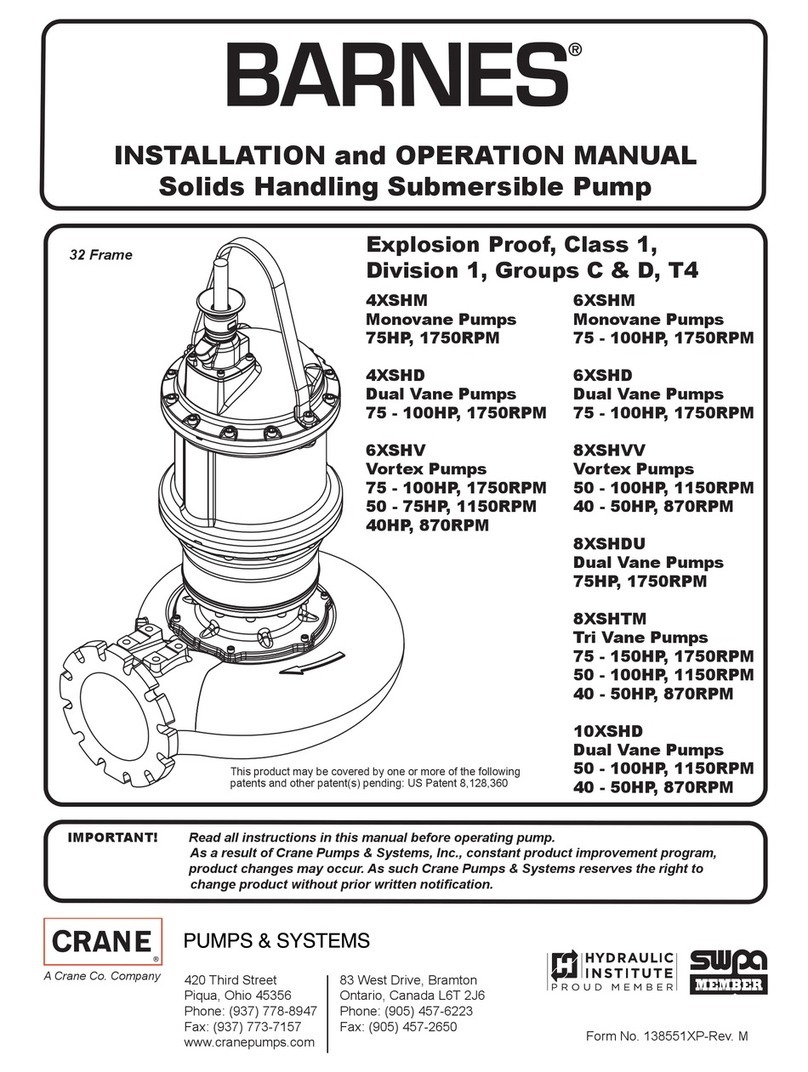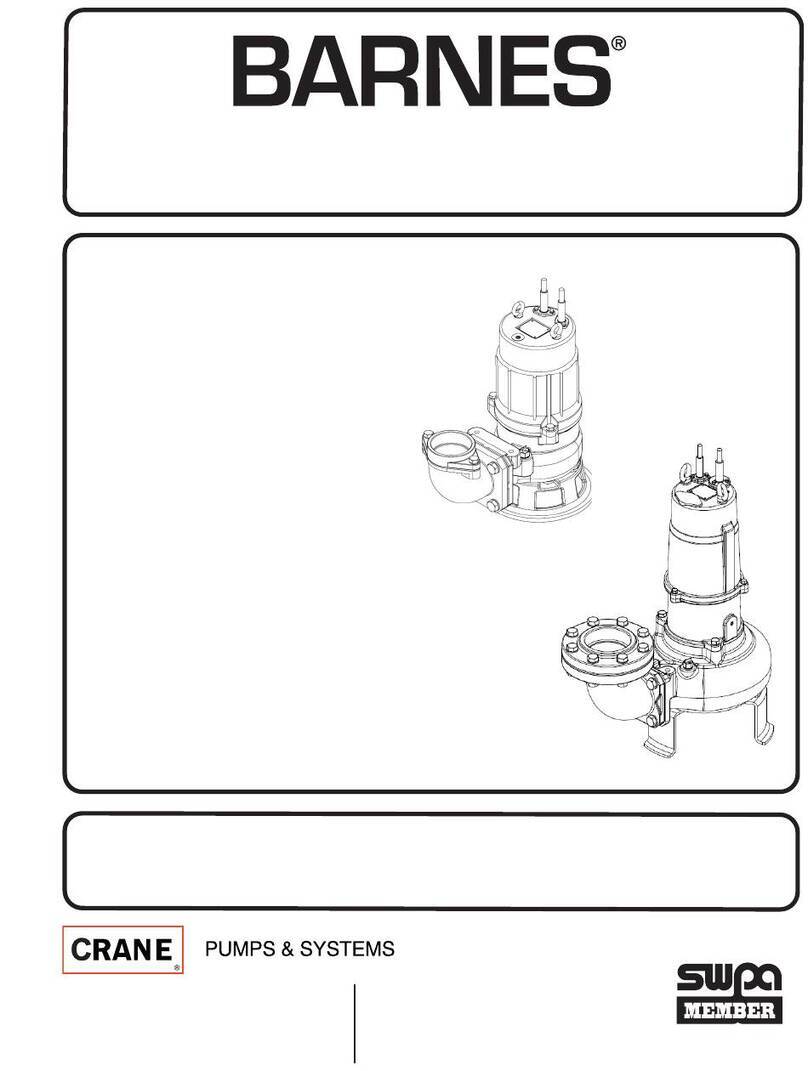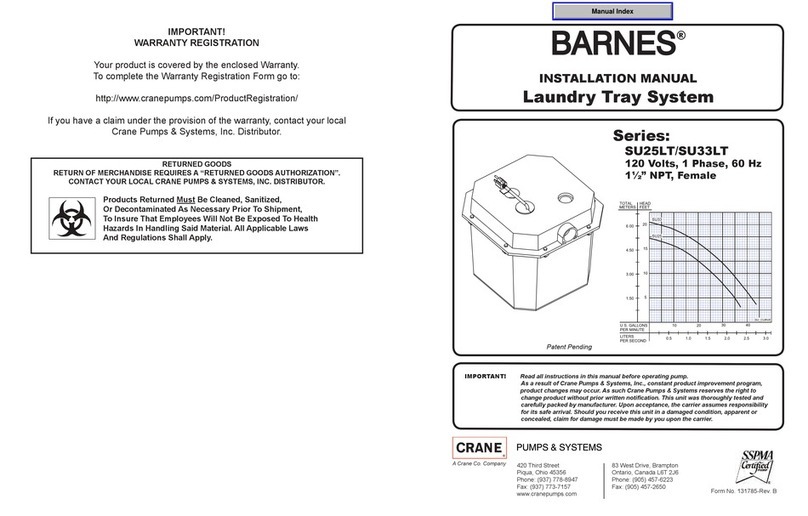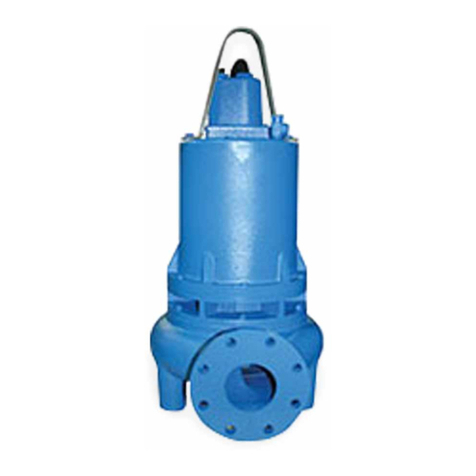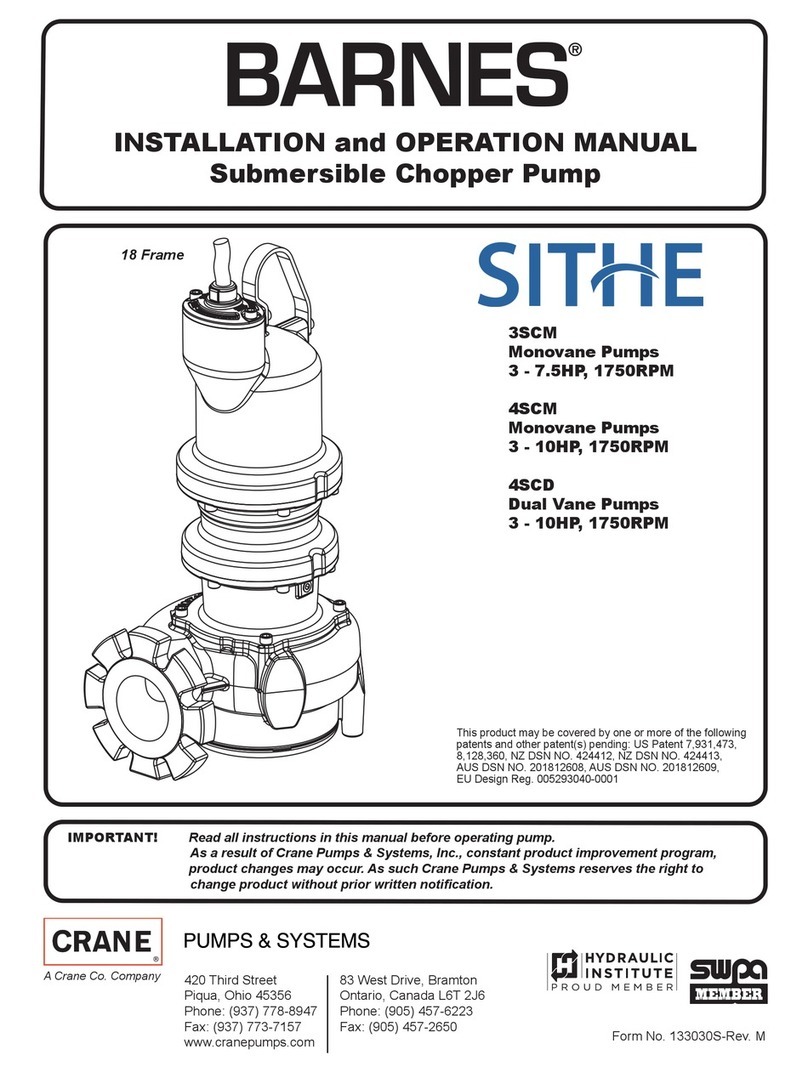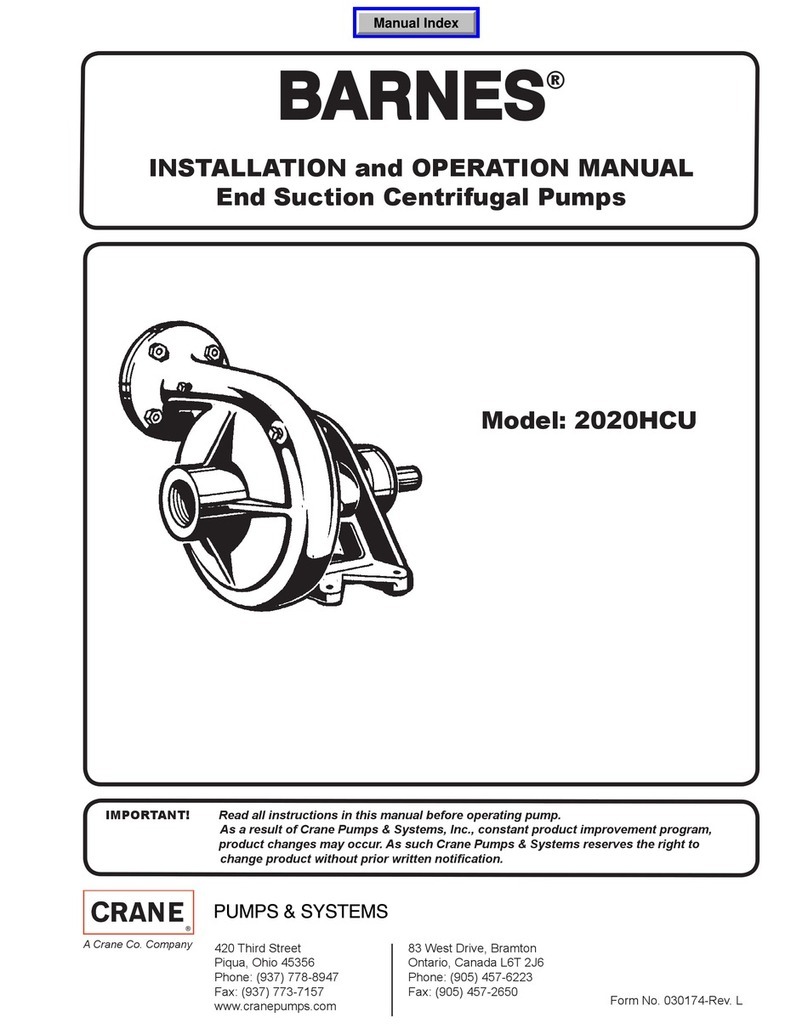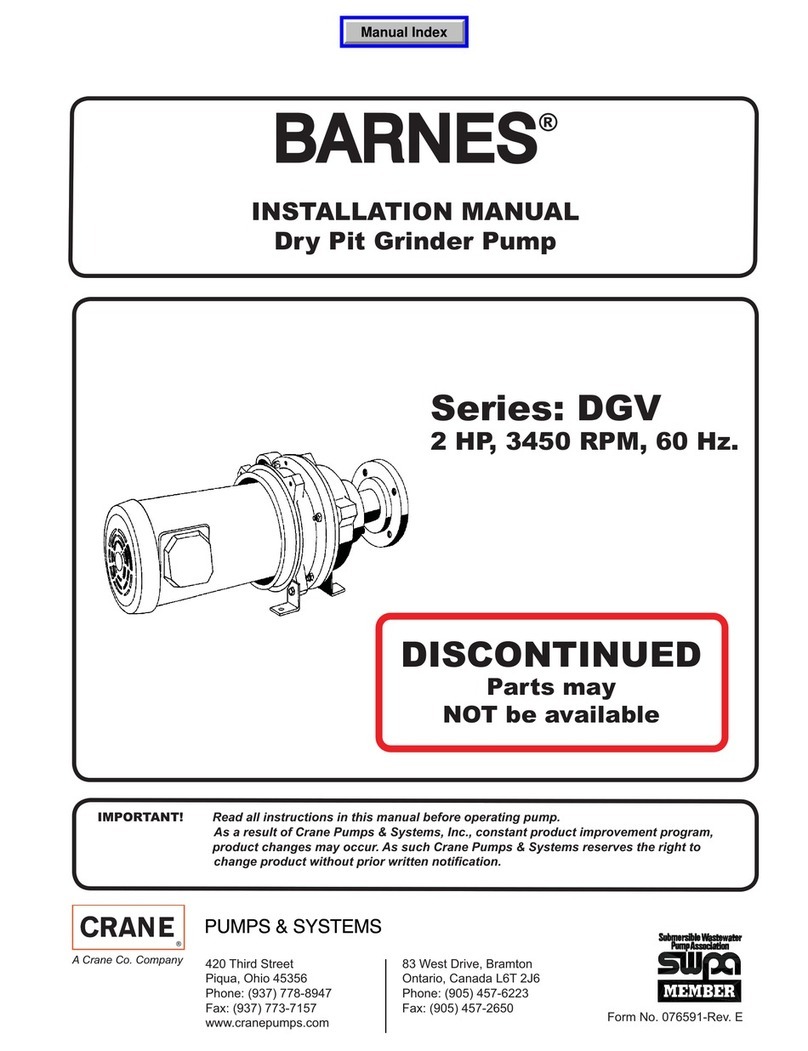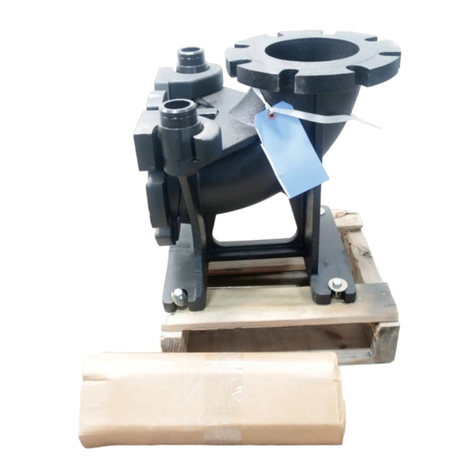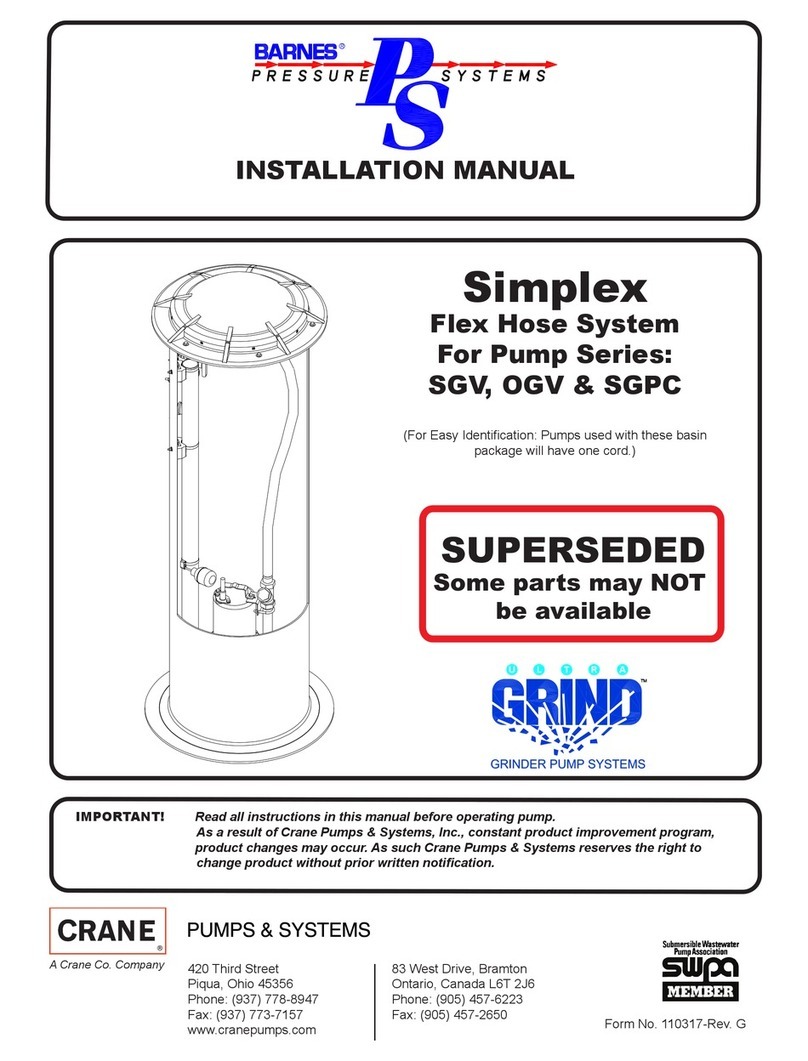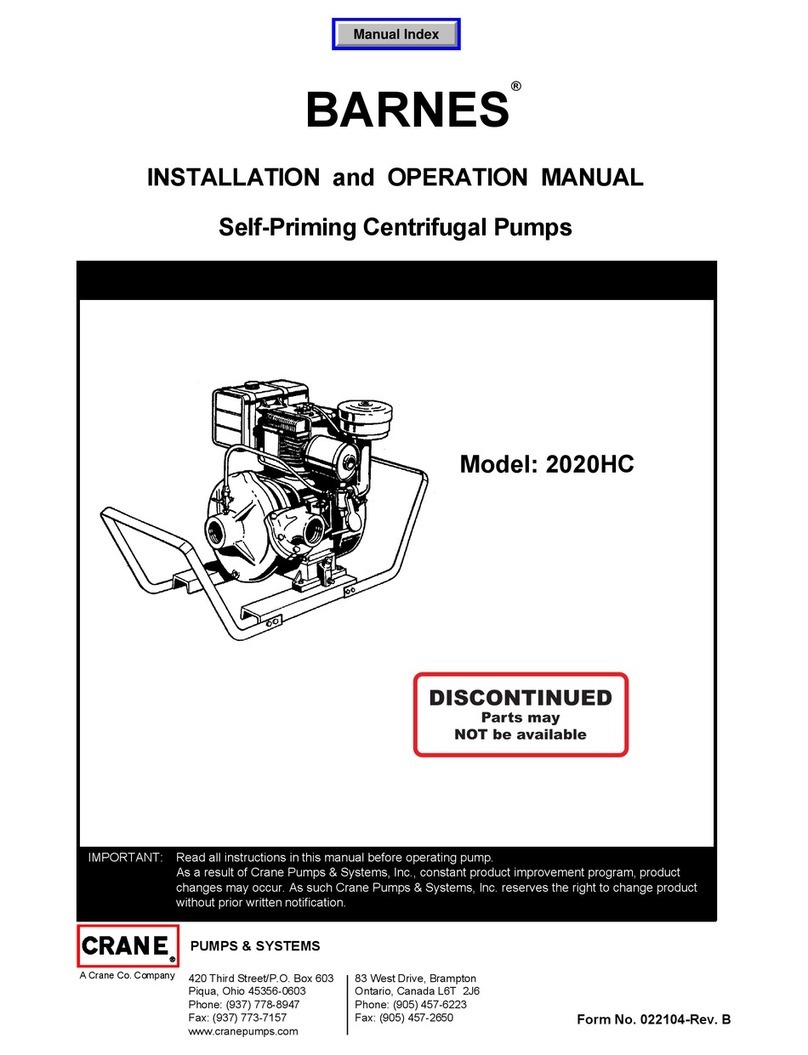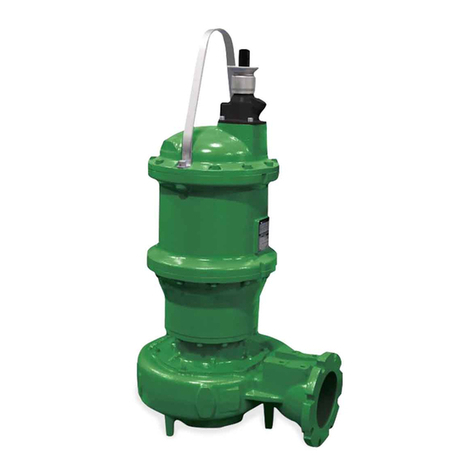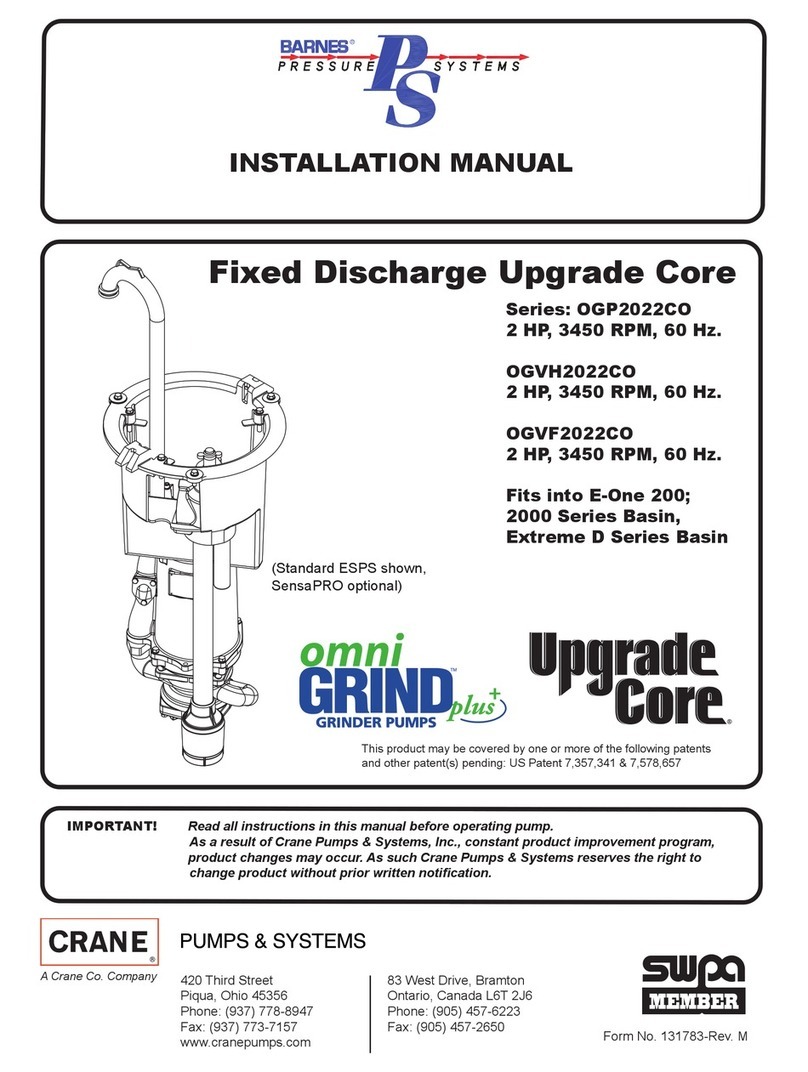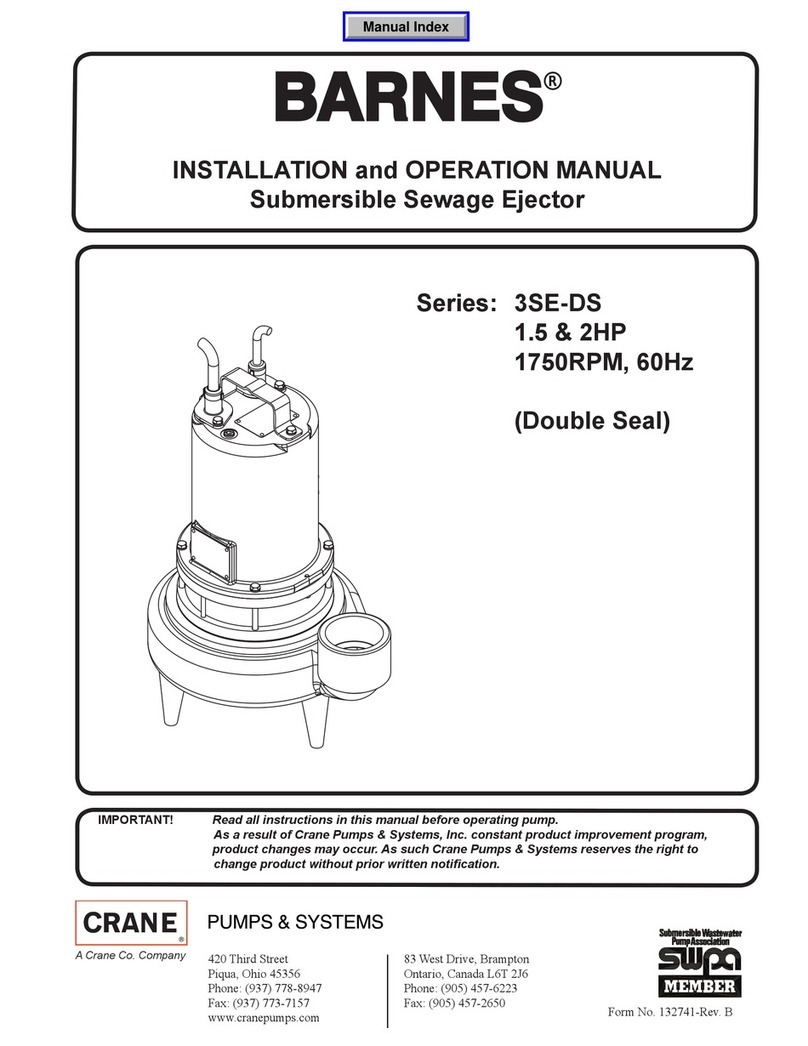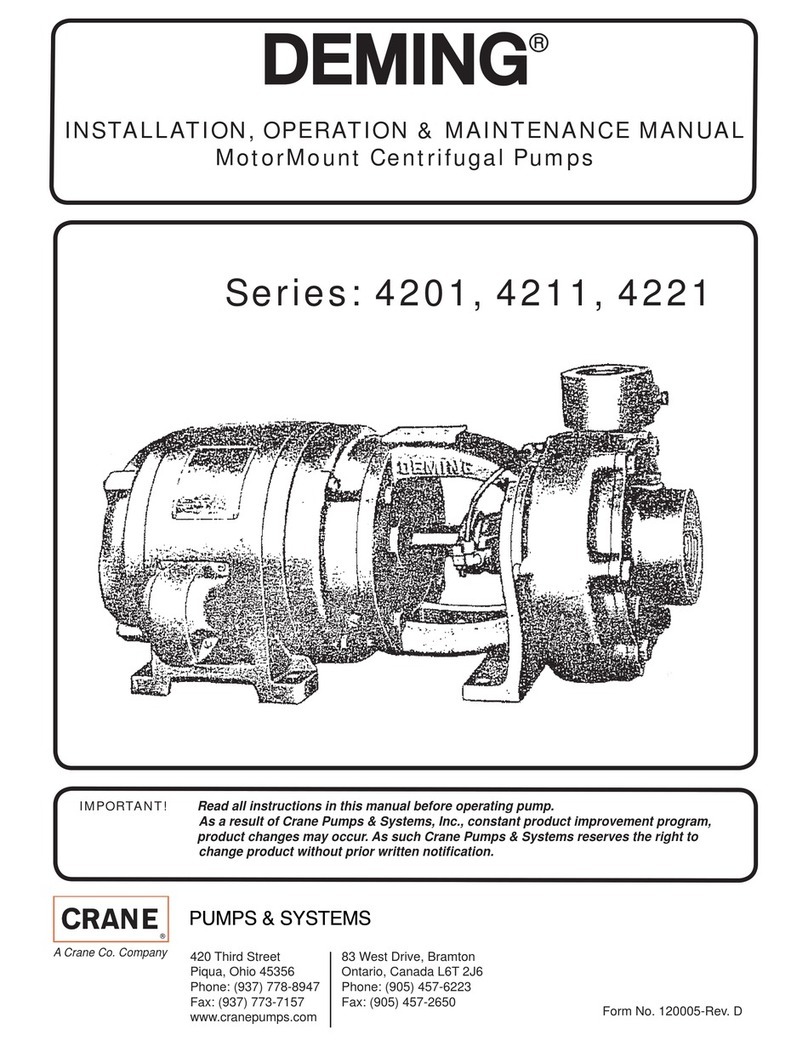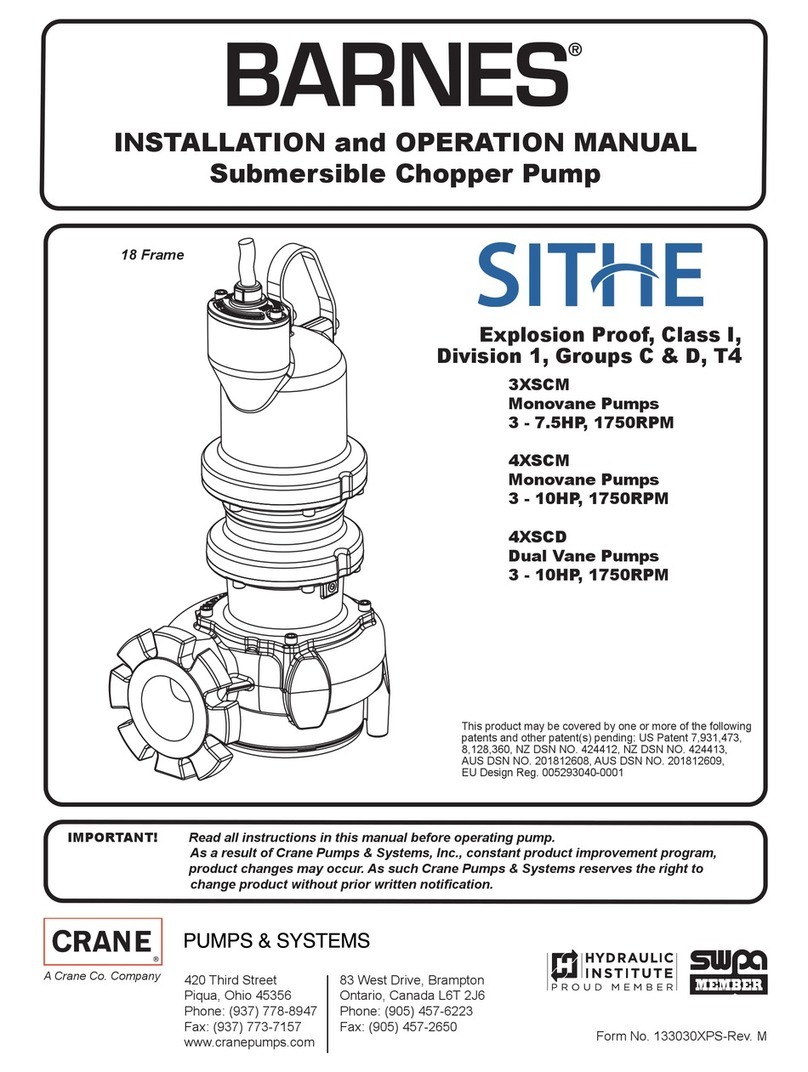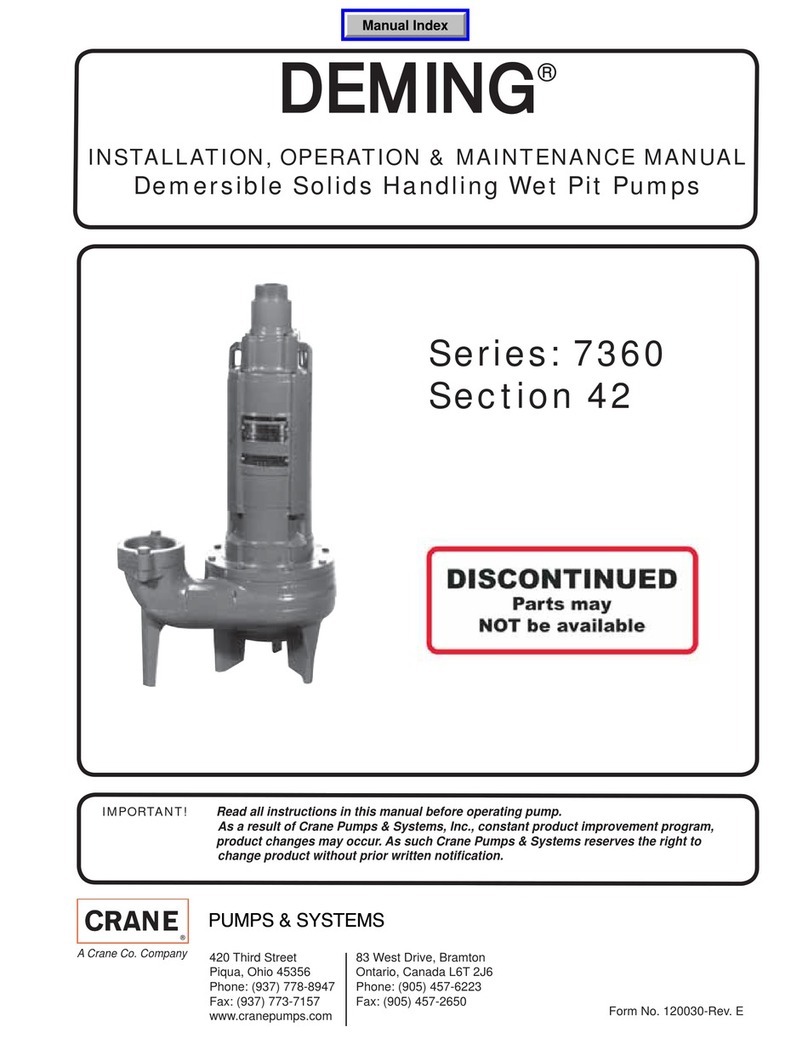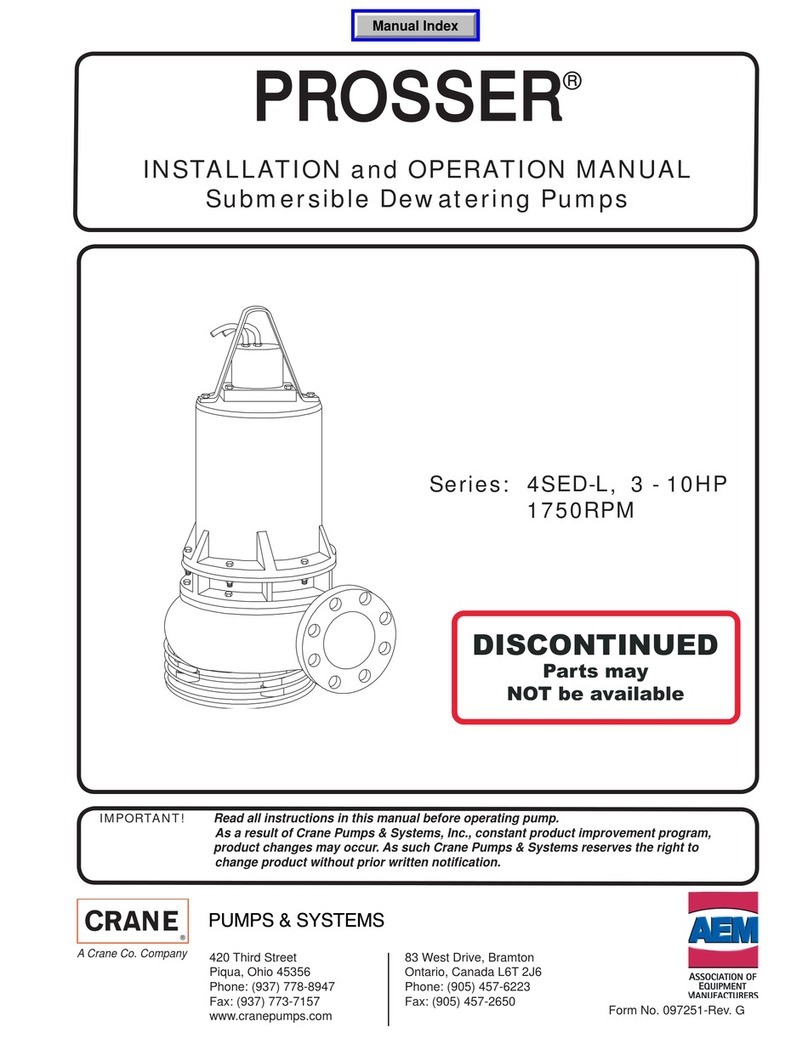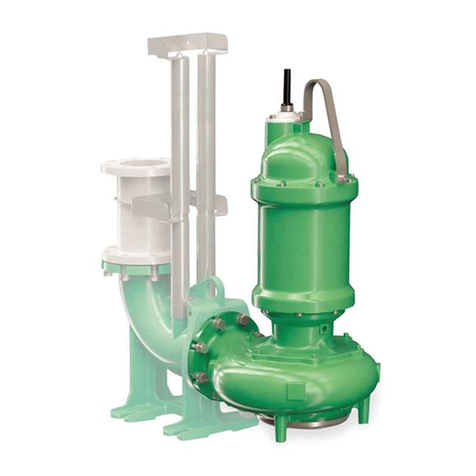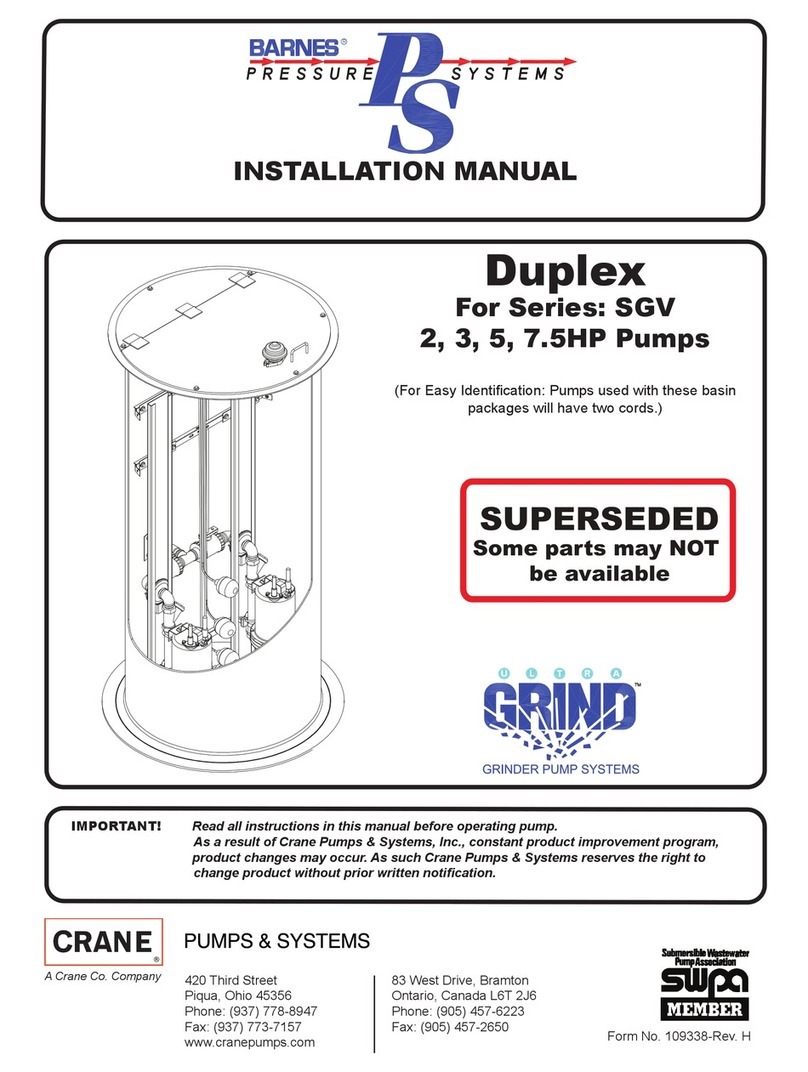
10
TEMPERATURE SENSOR ELECTRICAL RATINGS
Volts Continuous
Amperes
Inrush
Amperes
110-120 3.00 30.0
220-240 1.50 15.0
440-480 0.75 7.5
C-4.4) Moisture Sensors:
A normally open (N/O) detector is installed in the pump
seal chamber, which will detect any moisture present,
and a continuity test resistor built into the motor. The
test resistor is rated 1 watt at 330K ohms. The moisture
sensors MUST be connected to moisture detector control,
which includes a continuity test circuit, see Fig. 4 for
typical wiring diagram. The normally closed (N/C) contact
of the moisture detector MUST be connected in series with
the stop button of the pilot circuit of the magnetic motor
controller. A Warrick moisture detection control, Type
2800 is an acceptable control if properly installed and
maintained. Wiring must be provided from the moisture
detector sensor probe leads of the motor designated W1
and W2 to terminals 9 and 10 of the 2800-XXX control.
Terminal pair 1-2 must be continuously energized from an
A-C supply line of electrical characteristics shown on the
data table.
In the event of a moisture detect, the pump should be
pulled and the source of the failure located and repaired.
IF A MOISTURE DETECT HAS OCCURRED SCHEDULE
MAINTENANCE AS SOON AS POSSIBLE!
C-4.5) Control Panel and Electrical System:
The control panel and the electrical system MUST be
properly designed and wired to include at least, but not
limited to the following;
a. Proper grounding per NEC.
b. A temperature sensing circuit (see Fig. 3)
c. A moisture detection circuit with continuity test circuit
(see Fig. 4)
d. An intrinsically safe level control system.
e. A main power manual disconnect and lock out.
f. A motor starter and overload system.
g. Single phase only, requires a capacitor power pack
(see Fig. 3).
Control panels for single phase pumps MUST be
purchased from the factory and it is advisable that all three
phase control panels are also purchased from the factory.
SECTION: D START-UP OPERATION
D-1) Check Voltage and Phase:
Before operating pump, compare the voltage and phase
information stamped on the pump’s identication plate to
the available power.
D-2) Check Pump Rotation:
Before putting pump into service for the rst time, the
motor rotation must be checked. Improper motor rotation
can result in poor pump performance and can damage
the motor and/or pump. To check the rotation, suspend
the pump freely, momentarily apply power and observe
the “kickback”. “Kickback” should always be in a counter-
clockwise direction as viewed from the top of the pump
motor housing.
D-2.1) Incorrect Rotation for Three-Phase Pumps:
In the event that the rotation is incorrect for a three-phase
installation, interchange any two power cable leads at the
control box. DO NOT change leads in the cable housing
in the motor. Recheck the “kickback” rotation again by
momentarily applying power.
D-2.2) Incorrect Rotation for Single-Phase Pumps:
In the unlikely event that the rotation is incorrect for a
single phase pump, contact a Barnes Service Center.
D-2.3) Test Procedure For Moisture Sensor Control:
With a Warrick moisture detection control, type 2800, a
normally closed push button and neon indicating lamp is
provided as a means of checking the moisture sensing
components. When the push button is depressed, the
indicating lamp will be illuminated to indicate (A) power is
supplied to the control, (B) the control is operative, and
(C) wiring to the moisture sensing probes in the motor is
intact. This procedure should be performed periodically to
conrm integrity of the circuit.
D-2.4) Operation Precautions:
1. Do not operate the pump in the “hand” control position
and leave the pump unattended.
2. Minimize the amount of cooking grease entering the
system
3. Do not leave pump cover off the basin cover, except
while servicing, to prevent entrance of foreign materials
such as rocks, metal, soil, animals or humans.
4. Prevent large articles of clothing, large amounts of
chemicals, other materials or substances such as are
uncommon of domestic sewage from entering the
system.
5. During power black-outs, discontinue water
consumption at the home(s) to prevent sewage from
backing up into the house.
6. Prevent inltration or direct ow of rain or run-off water
into the pump basin to minimize pump cycling, This will
prevent overloading the treatment facility, and will
facilitate swift transportation of sewage.
7. Always keep the shut-off valve completely open when
system is in operation, (unless advised otherwise by
the proper authorities).
8. Keep the control box locked or conned to prevent
unauthorized access to it.
9. If the pump is idle for long periods of time, it is
advisable to start the pump occasionally by adding
water to the basin.
